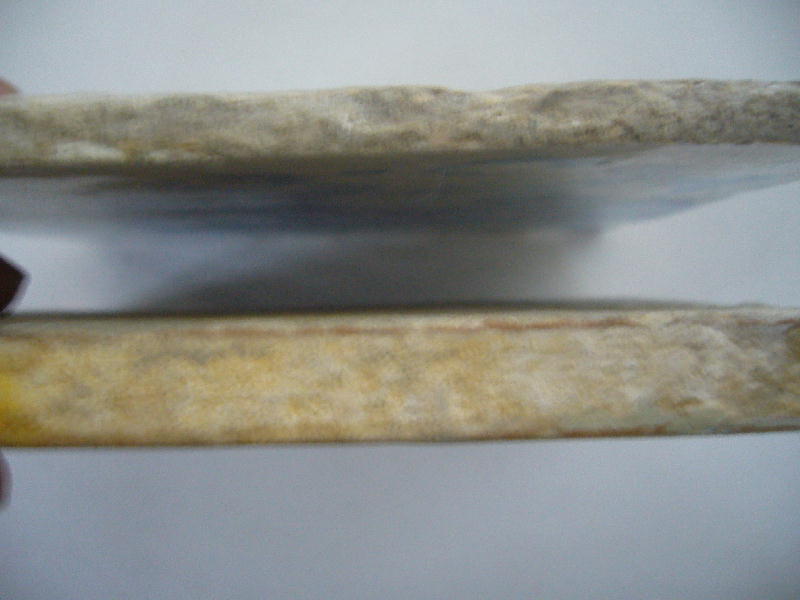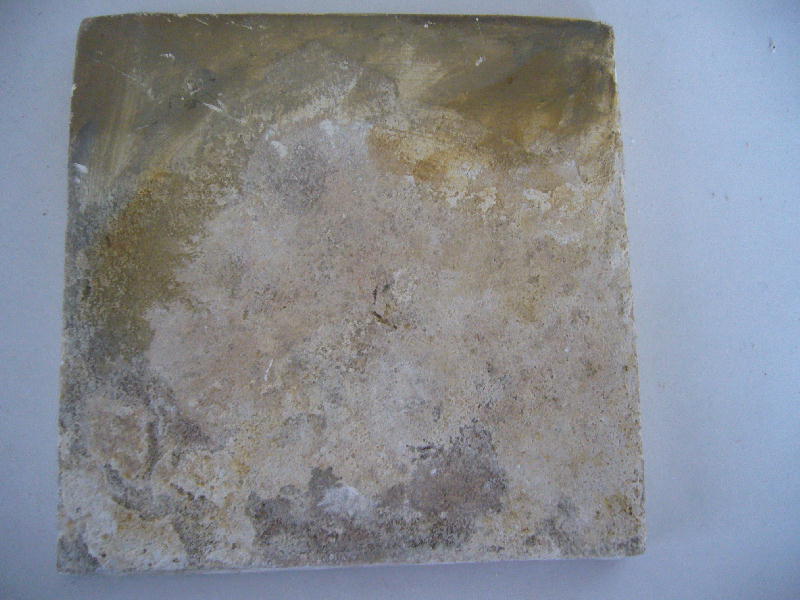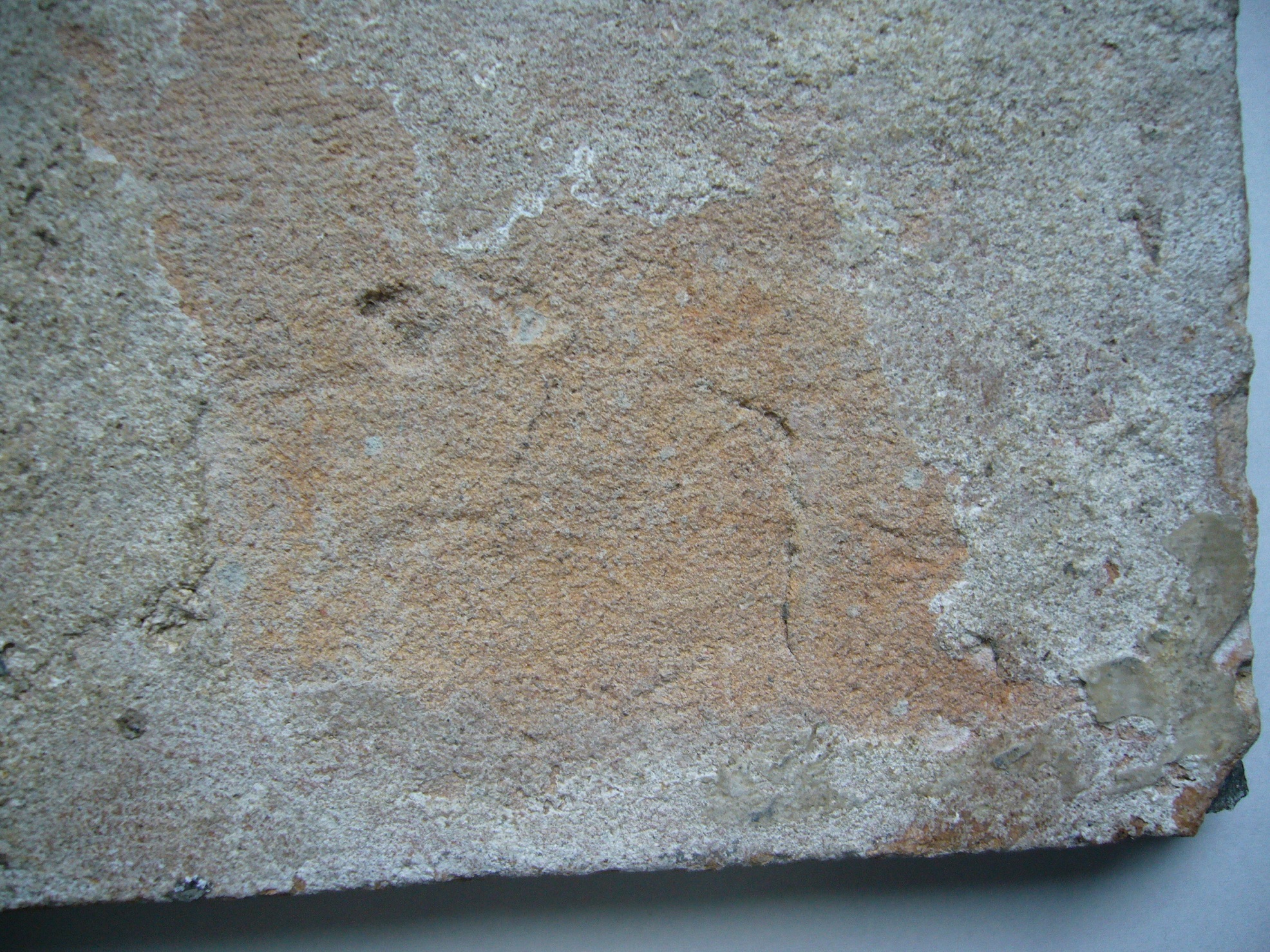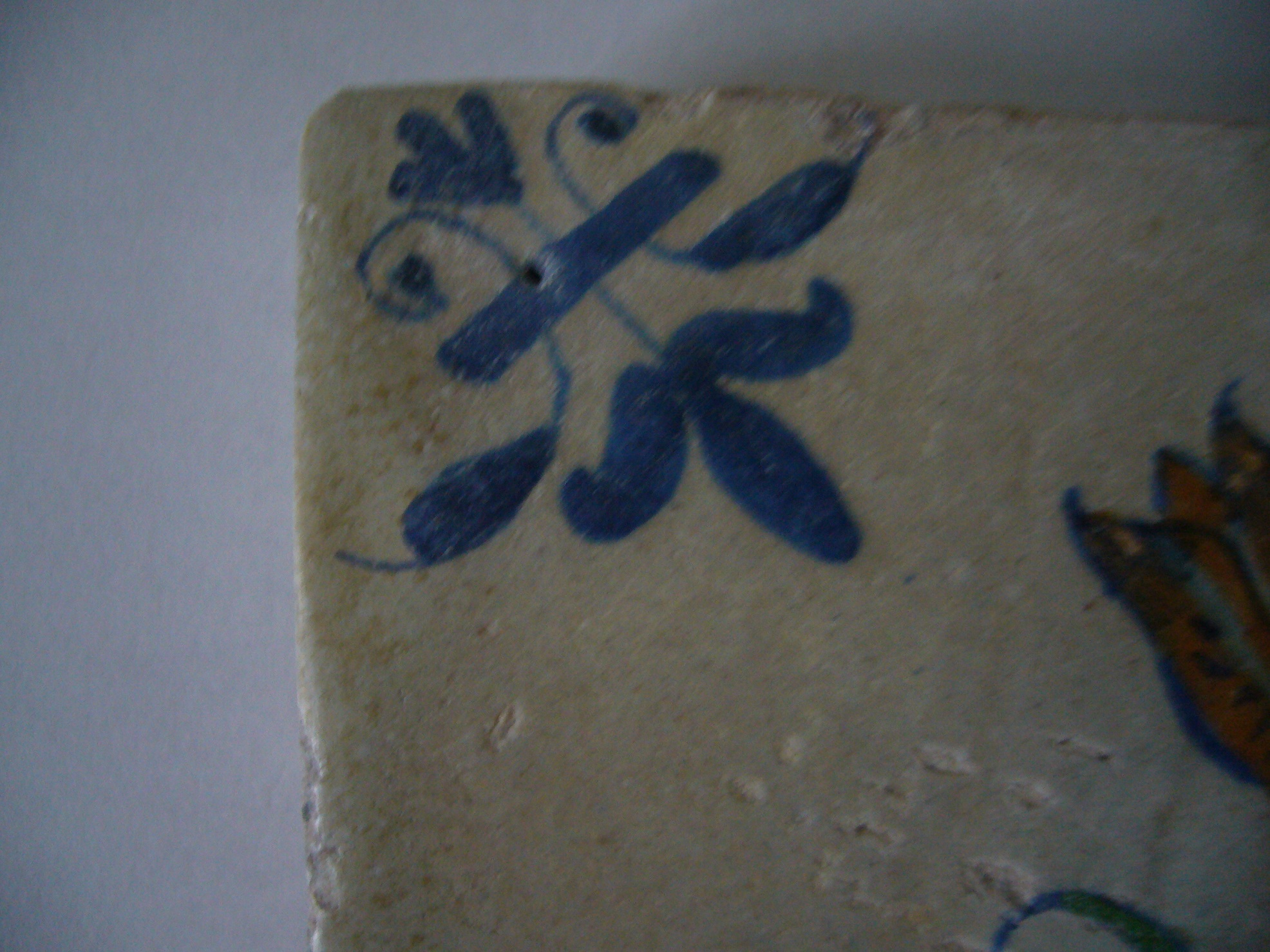Size
A normal size of Delft Tile is 5 x 5 inches but it differs slightly by the place or time of production. For example there are 4 x 4 inches or 6 x 6 inches(after 1830). Tiles were used to replace the skirting boards that were placed at the location where wall and floor crosses in order to protect water or humidity so the size of tile are resulted from the height of skirting boards. There is another type of Delft Tile that is rectangular, which is called border tile. Border tiles were used at the location where wall and ceiling crosses.
Thickness
In order to avoid cracking in the baking process due to the impure clay containing salts etc., early Delft Tiles were 0.6 to 0.7 inches thick.
As a result of purification of material clay and addition of calcium elements tiles became less fragile so its size became 0.4 to 0.5 inches in mid 17th century.
After 19th century thickness becomes less than 0.2 inches. By making tiles less thick it became possible to bake a number of tiles at one operation then the production
cost was reduced significantly.
Back of tile
Mortal or cement is still attached to the back of tile in many cases. If you see groove or maker's mark or stamp on the back of tile, such tile is relatively new. Because there was a rule that prohibited from making a signature or stamping maker's logo before 19th century. The color of back is different depending on the material clay used. The color of early tiles were red-brown and in 17th century it became grey or cream then after 19th century it changed to white-grey or weak-yellow.
Nail hole
There are a few nail holes left on the corner of tiles in many cases. A nail was was used in fixing and shaping up material clay in the wooden frame. Until mid 17th century there are three nail holes left and after then two nail holes.
If you click a phote, it will be enlarged.




